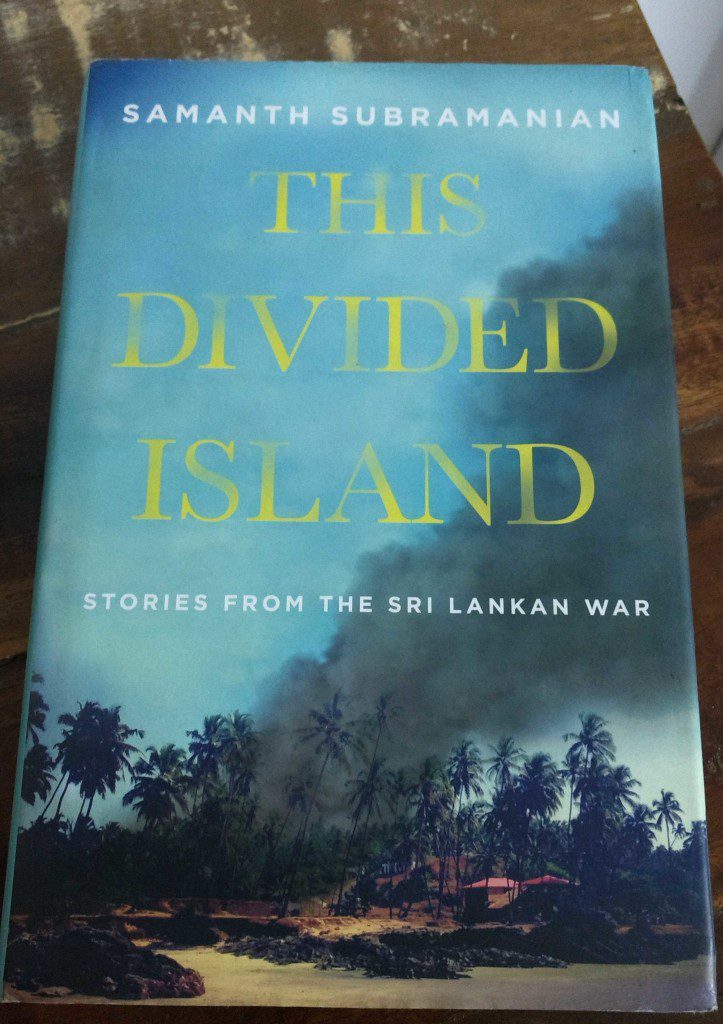Samanth Subramanian
We visited Lanka in 2010, just after the war had ended. Reading this book, and on hindsight, I think we underestimated the seriousness of what the country had gone through. I remember the undercurrent of bitterness in a conversation I overheard while sitting in a Colombo cafe. Directed at Rajapaksa, whose smiles beamed down on you every time you looked around, it was about how he was presiding over a reign of terror. I was surprised, because I thought everyone would be happy that the war had ended. Another instance I remember clearly – driving through Trincomalee and seeing some lovely beaches, I asked the driver to stop so we could walk a bit. He laughed ruefully and said that entry was restricted. The soldiers were clearing the area of land mines and a walk there might relieve me of limbs or even life!
When I wrote the travel log, I had the luxury of making these footnotes, but this book is a visceral breakdown of what Lanka went (and still goes) through. The war might have ended, but the scars remain fresh. I haven’t read any war or post war accounts, and therefore lack the perspective to compare, but I do know that this book really brings out the futility of such human conflict. The battle has very less to do with good and evil, because both sides have very little territory to occupy on moral high grounds. A line from Star Wars comes to mind “you have become the very thing you swore to destroy”. Prabhakaran’s treatment of fellow Tamils is about as bad as what the Lankan army inflicted on them. As a Lankan Tamil says in the book, the Tigers first lost the war “for the unconditional affections of the island’s Tamils” before it lost the other war.
And where does it all begin? If one goes by the Mahavamsa, the Tamils had been around for a long while. Two millennia at least, and a conflict between the two races is as old as that! In the more recent past, the Tamils prospered (relatively) thanks to their education in schools started by the British. Sinhalese angst at qualified Tamils taking jobs in all domains brought things to a slow boil. They began clamping down on the minority and the Tamils, egged on by Prabhakaran’s utopian vision of Eelam, began a journey that tore a nation apart.
It is the sadness of it all that overwhelmed me – the wife waging a bitter battle for the journalistic husband who ‘was disappeared’ (a phrase that came to be commonly used) for speaking out against the President, another who hopes her husband – a high ranking LTTE man – will return, the teashop owner who lost an arm and a son, and had to rebuild his life for the third time, the Tamils who fought in the Lankan army and were neither here nor there. So many lives and deaths, the futility of it all is depressing.
On a side note, Lanka’s Buddhism disappoints me at one level, because I don’t think the Buddha would have ever condoned violence, or monks advocating it! But that’s what happens when faith becomes religion. At another level, it scares me, because this is what India’s Hinduism could become, if left unchecked.
The author has done a fantastic job of chronicling the war and its effects through the perspectives of people who were in the thick of it. Towards the end of the book, I realised that he had been unspooling it ever so slowly – the brutality of the war, the intensity of the trauma and the starkness of the experiences. As though sensitising the reader in steps. This book wouldn’t have been an easy task – the physical nature of the travel on roads devastated by constant shelling, drawing out experiences from those who are probably yet to come to terms with it, and to not be affected to the extent of losing objectivity.
(thanks S, for this book)

